Expedition Log: Palau – Day 1
We’ve embarked on our next research mission of the Global reef Expedition to Palau, a Freely Associated State with strong ties to the United States. Palau is is in the western Pacific, fairly close to southern Philippines (740 km) and southwest of Guam (1300 km), forming the westernmost archipelago in Oceania. It is made up of 12 inhabited islands and some 700 islets which are a combination of volcanic islands, atolls, raised limestone islands and low-lying coral islands. The main island cluster is surrounded by a barrier reef, with a double barrier system in the east, numerous fringing reefs, submerged bank reefs, patch reefs and several offshore atolls. In many places the barrier reef forms a steep wall, dropping vertically or near vertically more than 8000 meters into the Palau trench.
One of Palau’s iconic formations are the Rock Islands, which are so special they are on UNESCO’s World Heritage List. These small islands are rugged, densely vegetated high limestone islands. These are formed from the skeletons of corals, spicules of soft corals, calcareous algae, mollusk and urchin shells, foraminiferans and other calcifying organisms. Many of these were former reef fronts that grew extensively while submerged and then were uplifted and sculpted by erosion over hundreds of thousands of years. They often have vertical steep cliffs of up to 30 m in height and some reach elevations of about 200 m. One unique characteristic of these is the undercut base (a “solution notch”) that extends into the rock 1-2 m, formed over the last several thousand years by a combination of dissolution and bioerosion during a period of very stable sea level.
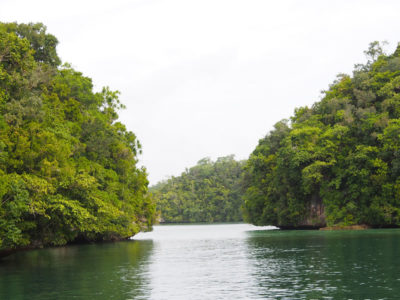
Heading through the narrow pass to our dive site in Nikko Bay
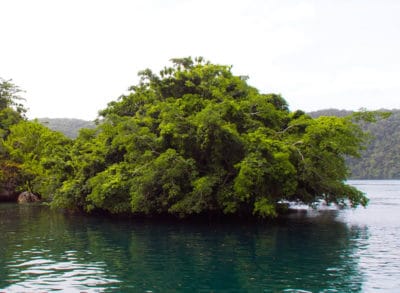
Small densely vegetated limestone islet

Inside Nikko Bay in the Airai Complex of Rock Islands
We start our surveys around the Airai Complex of Rock Islands located behind the sheltered barrier reef. These are some of the most eroded of the Rock Islands and are quite sheltered, with fairly turbid water that supports a unique coral reef community.
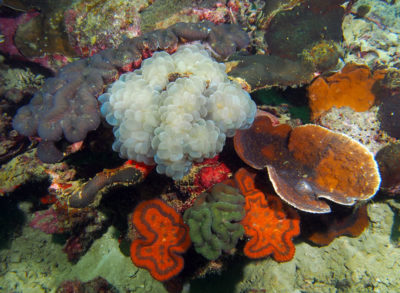
Fringing reef within the bay had a high diversity of colorful, sediment tolerant corals such as bubble coral (Plerogyra), lobe coral (Lobophyllia), chalice coral (Echinopora) and lobed brain coral (Symphyllia)
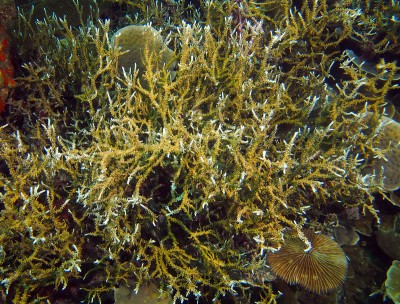
The calm protected waters supported fragile branching corals such as Anacropora.
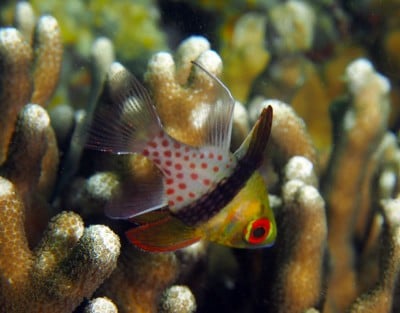
While few large fish were seen many smaller reef fish such as the pajama cardinal fish (Sphaeramia nematoptera)
